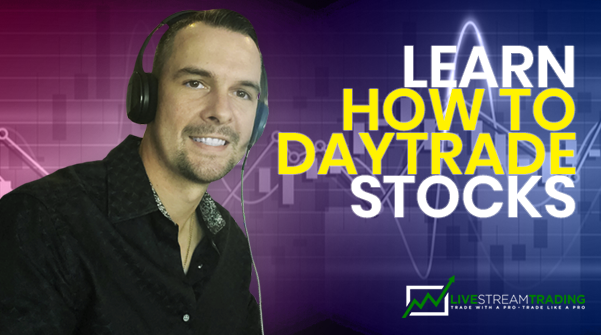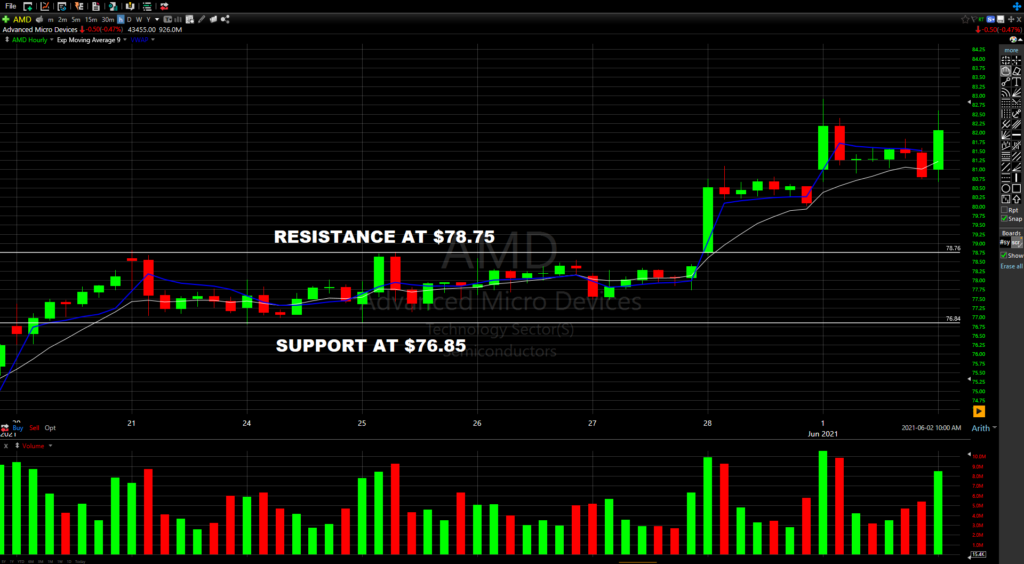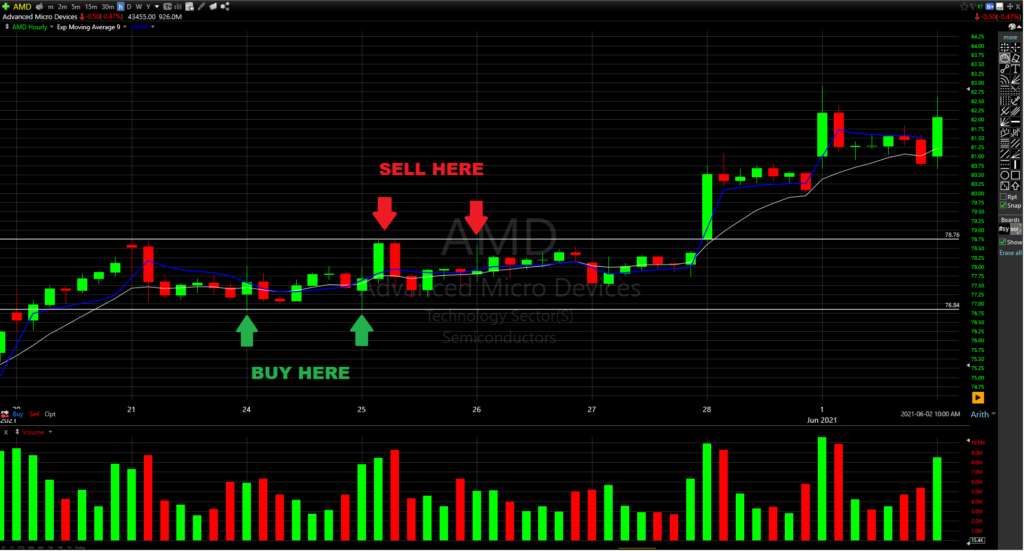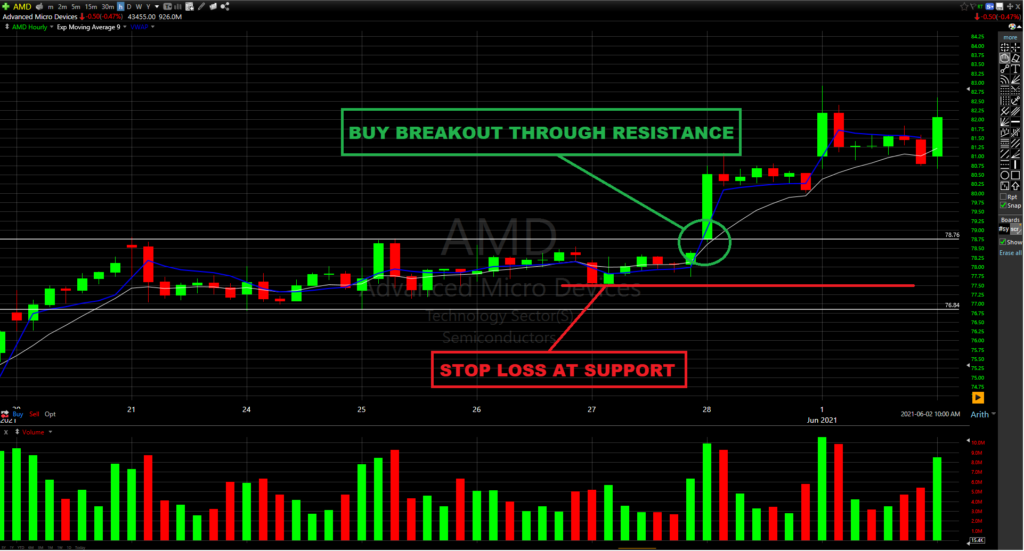What is Day Trading?
“Day trading” usually refers to the practice of buying and selling a security within a single trading day. While it is possible to day trade any kind of security that is publicly traded on financial markets, the practice is also conducted in the forex markets.
Ideally, those who engage with the practice of day trading are well-educated and well-funded individuals who have the psychological framework and strategies in place to trade in the financial markets successfully. However, with the dawn of the digital age and the online trading platforms that followed, it is now easier than ever for the average investor to begin day trading.
What Skills are Required?
Day trading demands that those who engage in it are well versed in a multitude of strategies and have the psychological fortitude and discipline to focus and consistently apply their strategies throughout their trading careers.
Despite the difficulties and challenges that day trading can present, every single day across the world traders profitably trade a wide range of securities in a large number of markets by implementing various strategies in a focused and disciplined manner.
This beginner’s guide to day trading online will highlight the key pieces of information every would-be trader should know before embarking on their trading careers.
What are Day Trading Rules?
Learning how to day trade for a living is no easy task and there are some key rules that should never be broken. Let’s take a look at three basic day trading rules that will help any day trader successfully navigate the financial markets.
The first rule of day trading has always been and will always be to appropriately manage your risk. Risk management can not be emphasized enough - set strict stop-losses for every trade you make, especially short positions. You should always know how much money you are prepared to lose on any trade you make.
The second rule of day trading is that traders should not hold any positions overnight or through the weekend, even if this means selling at a loss. It is always tempting to simply hold your positions, especially those in great companies until their stocks recover. Unfortunately, stocks can take days, weeks, or months to recover back from a fall.
Holding positions over the long term will undercapitalize your day trading account and weaken your trading potential. It is recommended to have a separate account for swing trading and investing that you intend to holder longer term positions in.
Think of it as target practice, if you miss a few shots you would not leave your gun at the range, as this would leave you with one less weapon to shoot at the next target with.
Finally, rule number 3 is that day trading is a business like any other and it should be approached in this way. Traders who approach trading as though it is a hobby, something amusing to engage with during their free time, are the ones who lose money over time. Trading is a serious intellectual pursuit and those who fail to appreciate that will quickly know the sting of failure.
How is Day Trading Different From Other Styles of Trading?
As we noted at the beginning of this post, day trading refers to the practice of buying and selling securities within a single trading day. Whilst day trading is an especially popular way of trading, it is by no means the only style of trading. Another popular trading style is known as swing trading.
What is Swing Trading?
Swing trading involves holding the securities you purchase anywhere from a few days to a few weeks. It is an entirely different form of trading and you should not make the mistake of thinking the strategies you employ in your day trading are transferable to swing trading.
One of the key differences between day trading and swing trading is in the approach to finding securities to trade. Swing traders typically focus on finding great companies that won’t lose their entire value overnight. Day traders are much more adaptable in their approach and can effectively trade anything, even companies facing bankruptcy, as day traders don’t care what happens once the market closes.
Tools Needed for Day Trading
Every tradesman needs his toolbox and a day trader is no exception, but tools are of no value if the tradesman does not know how to use them. It is vital that you become intimately familiar with the tools detailed here and learn to use them to the best of your ability.
Day Trading Brokerage Accounts
The first thing any day trader will need is a brokerage account. With the development of online investing platforms, it has become easier than ever to trade in the financial markets. Brokerages are our gateway into the financial system, they are online platforms that connect buyers and sellers to facilitate a transaction. In other words, you use this brokerage account to buy and sell shares of stocks.
Choosing the right broker for you is an important decision because it impacts everything from the fees you pay to the trading tools you have at your disposal when trading. With the growing interest in trading and investing, it is now more vital than ever that traders sign up to a reputable broker when they begin trading in the financial markets.
Trade Zero Brokerage
Whilst it is beyond the scope of this particular guide to provide an overview of the best brokerages currently available, what we can do is recommend that you look into opening an account with Trade Zero. I personally use this brokerage and have found them to be one of the best brokerages for day trading. Beyond their competitive prices, they provide lightning-fast trade executions and some of the most accurate market data available. Further, Trade Zero has access to the most sophisticated trading tools and software with a wide range of trading indicators and charting software to assist you in your trading career.
Watch-Lists and Scanners
The next thing every trader will need to do is assemble a watch list and employ the use of a stock scanner. There are thousands upon thousands of securities that are available to be traded on financial markets across the world. With this many options, the question “how to find day trading stocks” is not an uncommon phrase for day traders to type into Google and traders can quickly become the victims of decision fatigue.
To combat this, there are a number of online scanners that can be used to locate potential trades. Again, it is beyond the scope of this post to discuss the wide range of scanners available to help day traders locate potential trade setups. However, I personally use TC2000 software for scanning the market to find potential trades.
Day Trading Communities
Finally, every day trader should attempt to find a community of other traders with which to communicate. The human-animal is a social creature, for better or worse, we need to be around other people and the life of a day trader can be a solitary existence. Surround yourself with successful traders and let their good habits rub off on you!
Day Trading Psychology
In order to day trade successfully you will need to be capable of rapid decision-making and employ the use of very disciplined, often emotionless, strategies.
Even the most experienced day traders, if they are being honest, will tell you that it is impossible to know with absolute certainty what the market will do. However, it is vital that regardless of which way the market moves, you know exactly what you will do.
If you don’t, the game is lost before it begins. The finest software and most sophisticated strategies will not be any help to the day trader who has the emotional fortitude of an infant.
Do You Have What It Takes?
Here are some questions you should ask yourself when day trading that will help ensure that you are self-aware and making rational decisions when trading:
- How does this fit into my trading strategy?
- If the trade runs away from me, where is my stop-loss?
- What is the risk/reward in this trade?
- Am I calm and focused when taking my positions or am I making this trade without fully considering the questions above to avoid “missing out” on an opportunity?
Whilst learning this level of self-awareness and discipline is not easy, and by no means is it achieved quickly, once it has been learned it can not be forgotten. In many ways, it is like learning to ride a bicycle, once you know, you know.
Lastly, in many ways, day traders are like doctors in that they can be thought of as eternal students. A day trader never stops learning, if you think you know it all then I can assure you that sooner or later the market will show you that you don’t. Individuals who embark on this career should be mentally prepared for career-long learning and ongoing self-development.
Risk Associated with Day Trading
Risk is an inescapable part of investing and day trading. The most obvious and constant risk associated with day trading is the risk of losing money. Inevitably, every trader, no matter how experienced or well prepared, will lose money on some trades - the key to success is having a good strategy, using a bulletproof risk management system, and understanding risk vs reward.
Whatever strategy you decide to use, proper risk management is one of the most important aspects of trading. Traders should ensure to calculate the amount they are willing to lose on a trade and set a strict stop-loss to ensure that their losses are limited in the event that the trade does not go as planned.
How Much Can You Earn as a Day Trader?
Understandably, many would-be traders are interested in knowing how much do day traders make? Unfortunately, answering this question is a bit like answering the question “how long is a piece of string in a spool”? The potential is there for day traders to make millions of dollars. However, what you make will depend on how successful you are, the amount of capital you have at your disposal to trade with, and the amount of time you spend trading, and how disciplined you are with your trading strategy.
What is the Minimum Amount of Money to Day Trade?
The answer to this question is subjective, you can trade with very minor amounts of capital, for example, with our preferred broker Trade Zero you can fund an account with as little as $500 or as much as you want. However, if you plan to day trade for a living you should make sure that you have sufficient capital to generate the amount of income you will need to sustain yourself.
Assume that you have great confidence in your skills and believe you can comfortably average a 0.1% per day return. If you are trading with $1000, that’s $1 per day. It is unlikely that will be enough money to keep you alive, regardless of where you are in the world. You should ensure that your trading account is not undercapitalized so that you are able to meet your targets and expectations.
What are The Best Day Trading Strategies For a Living?
There is a multitude of day trading strategies that traders can implement in order to begin day trading for a living. These strategies will usually be based on various data points including price action, technical indicators, and chart patterns.
Usually, traders will use a combination of these data points in order to inform their trading strategy. It is well beyond the scope of this guide to detail the specifics of every day trading strategy available, so for the purposes of this guide we will focus on a relatively simple day trading strategy known as support and resistance trading.
This is one of the more straightforward strategies and so it is suitable for new traders to begin learning and testing their skills.
For more advanced trading strategies with very specific guidelines, I recommend watching our day trading courses which a free for members of our live trading group.
Support and Resistance Trading
Whilst the basic concept of support and resistance is a fairly elementary concept to grasp, it becomes far more difficult to master when traders begin to understand that support and resistance lines come in various levels. Let’s look at the basics of support and resistance.
A support level is where a stock will cease falling in price. During a downtrend, stocks will continue to decrease in price. Eventually, these stocks will hit a “floor” beyond which the price seems reluctant to fall. This floor is described as a support level. Resistance levels are the opposite of their supporting peers.
During an uptrend, stocks will continue to rise in price. Eventually, these stocks will hit a “ceiling” beyond which the price seems reluctant to rise. This ceiling is known as a resistance level. You can see an example of support and resistance levels in the chart below.
What Creates Support and Resistance
Support and resistance levels are formed by large amounts of traders congregating around similar price points. They are the results of market psychology, human behavior, and wider market forces like supply and demand.
As a result, it is very unusual for the price to hit the exact same level time after time before reversing. We refer to these support and resistance levels as zones because they are the general area around which support and resistance can be found.
As a general rule, stocks will trade in between these support and resistance levels until they breakout. Prices will consistently flow between the two levels, bouncing off the support line when the price falls too low or off the resistance line when the price gets too high.
Naturally, the market is a volatile place. Prices regularly fluctuate up and down, sometimes for seemingly no reason at all. Distinguishing between random price fluctuations in the market and genuine support and resistance levels can be a particularly difficult task. However, there are a number of methodologies that traders can implement in order to do this.
How to Identify Support and Resistance
One way to identify the highs and lows in the price levels of a security’s price chart is by using its historical price data. This method is based on the premise that, once the highs and lows have been identified, traders can track how many times the price of the security tests them.
In science, in order to test a hypothesis, one must conduct an experiment. If the results of that experiment are repeatable and consistent, then one can reasonably conclude that the result is reliable.
Let’s assume that a trader believes that a stock is range-bound with resistance at $30 and support at $10. The best way to test this hypothesis is to examine the chart. How many times does the stock hit these support and resistance levels and bounce off them?
The more times a stock falls to support and rises or rises to resistance and falls, the more reliable the conclusion that there is support and resistance at these levels. However, whilst this may be the conventional wisdom, it should be noted that conventional wisdom is seldom wise in the financial markets and traders should always exercise caution and use other metrics to confirm their conclusions.
Trading Indicators and Moving Averages
Other indicators that traders can utilize to find support and resistance levels are moving averages. To make use of these indicators, traders should draw a diagonal line from the highest peak to the lowest peak in order to identify which way the trend is moving.
If the trend line moves up, the moving average will act as a support line and vice versa. These levels are known as dynamic support and resistance, as the levels are constantly changing.
The most basic trading strategy when using support and resistance levels is for traders to buy a security when it is approaching a support level and then sell when it is reaching its resistance level. Alternatively, traders could short a stock when it reaches its resistance level and close their short positions once the security retraces back towards its support level.
When using this particular strategy, traders should wait for confirmation that the market is still following this trend. To do this, traders may use a range of other indicators such as the Relative Strength Index (RSI), or moving averages.
Buying Breakout Levels
Another strategy traders could implement is known as the “breakout” strategy. This strategy involves traders waiting for the price of the security to move outside of either its support or resistance levels. It is based on the belief that when a security moves beyond its support or resistance levels it is likely that the security will continue to move in that direction long enough for traders to profit from the price movements.
When using this strategy, traders should use a number of technical indicators to verify that the breakout is genuine. Volume is a particular indicator that traders should pay attention to when using a breakout strategy. In order for a breakout to be successful, there will need to be a large number of shares being traded. A breakout with a low volume is unlikely to succeed.
If you are considering employing a breakout strategy, you should remain cautious even if the volume is high. High volume in a potential breakout does not always mean the breakout is genuine. Even if there is high volume in a trade, it is common for a security’s price to retrace back down to the breakout point before breaking out again.
This volatility is caused by short-term traders rapidly trading the breakout and selling for a quick profit.
One recommendation for those trading support and resistance levels is that traders place their stop losses below support or above resistance. This will help to close the trade quickly in the event that the price of the security goes through a breakout.
Prior to entering the trade, traders should identify both their profit targets and the level of loss they would be willing to accept in the event that the trade does not go as anticipated.
Popular Day Trading Strategies
Before moving on, we will list some other popular day trading strategies below for you to study in your own time.
- Top & Bottom Reversal Trading;
- VWAP Trading;
- Moving Average Trend Trading; and
- Bull Flag Momentum.
Who is the Richest Day Trader in 2021?
If we simply approach answering the question by determining which day trader has the highest net worth then the title of “richest day trader” goes to George Soros. Known as “the man who broke the Bank of England”, Soros made over $1 billion during the Black Wednesday UK currency crisis by shorting the Great British Pound. His current net worth, despite his incredible philanthropic works, sits at just over $8 billion USD.
However, there have been other wildly successful day traders who have made staggering fortunes through their efforts including John Paulson and Paul Tudor Jones. It should be noted that every name on this list made their fortunes through shorting various markets/securities during times of crisis. I suppose the old political saying “never let a good crisis go to waste” rings as true in the financial markets as it does in politics.
How to Succeed in Day Trading?
After reading through this post the question on most people’s minds would be “should I start day trading now?”. As we mentioned earlier in this guide, day trading is not an easy thing to do successfully. Anyone can lose money in the markets, but it takes a skilled trader to consistently make profits over sustained periods of time. The life of a day trader is a challenge without a doubt, but that does not mean you should shy away from it.
If you aspire to make your living through day trading, then you must be prepared to continuously learn and develop your skills. Start small, focus on a handful of stocks as opposed to jumping in headfirst and wearing yourself thin. Finally, remember to keep your emotions in check. Successfully trading in the financial markets as much psychological as it is technical. We highly recommend getting properly educated with experienced traders and learn the fundamentals with a practice / simulation trading account before trading with real money.
P.S. - Grab our free Day Trading Video Lesson below!










